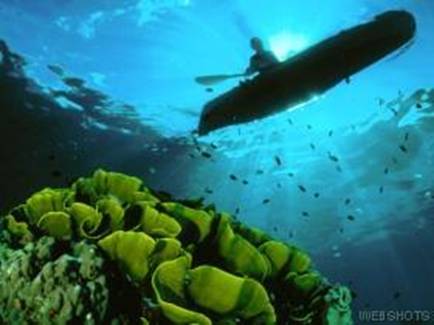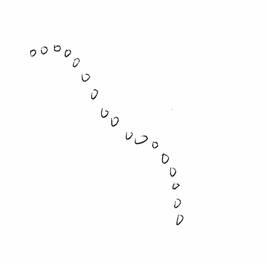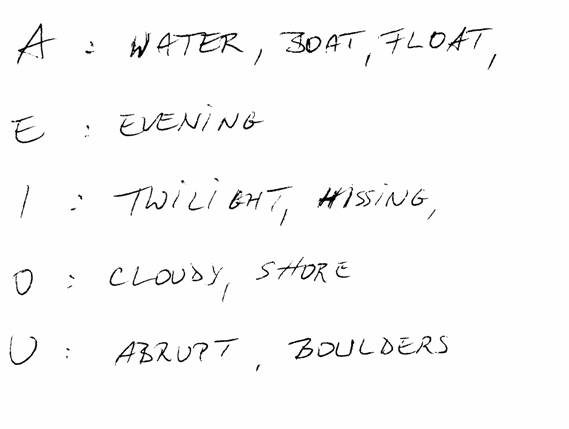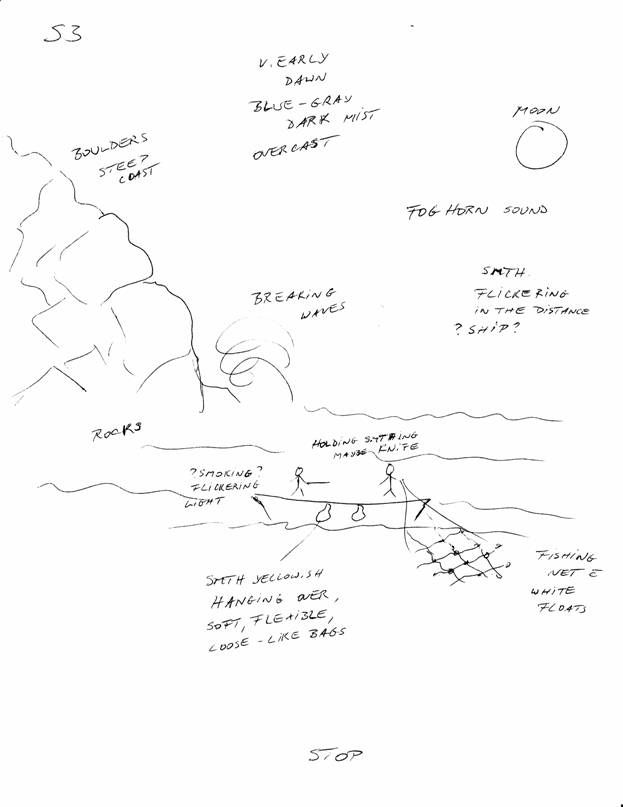If Anything can be Remote Viewed, then all Things can be

by Sita Seery
The fundamental premise of the methodology employed by the Hawaii Remote Viewers’ Guild is that “if any thing can be remote viewed, then ALL things can be remote viewed.”
One of the most challenging aspects to our remote viewing program in the Guild is the On-Line Remote Viewing Program. In the past, we have taken students from Stage one learning visual ideograms to make target contact and ascending them to Stage 4 Cascade, a protocol that requires the student to impart some higher level data.” Once in awhile, we get students that adhere to protocols with decisive regimen and the results are reflected in their work.
One of our students, Lian Sidorov, is currently enrolled in the On Line Course as one of my students. Her work for the feedback period ending August 1, 2003 is reflected in this brief graphic essay. Lian is currently up to Stage 3, but her work was such that it merits honorable mention. I am continuously amazed at some of the students’ work, especially those who are performing excellent work in the On Line Training Program. The On Line students have a disadvantage; they are learning the protocols on their own time, in their own environment, under various conditions that may or may not be conducive to the “ideal” remote viewing setting.
The target was a simple kayaker rowing over some cabbage coral in the Solomon Islands:
Target ID: PWIP-CUAY (Kayaker over Cabbage Coral/Gizo, Solomon Islands /Photographic Time Line)

This is Lian’s first visual ideogram. Flowing, circular shape with one end peaked.

This is Lian’s second visual ideogram, clearly expressing target contact with the water gestalt. It is interesting to note the flowing pattern of the little circles (bubbles).

The second protocol Lian learned was spontaneous ideograms, a method used to expel energy built up within the working arm. She noted the target as having simplex aspects, wet attributes, natural environment yet she perceived it to be dynamic.

The next protocol Lian learned was Playfair. It is a simple threaded matrix used for more detailed data collection. The cells you see stringed together is called a “galley” in HRVG methodology. In Sights, Lian again graphically illustrated the flowing bubbles. She sensed something “under pressure” in sounds, and noted metallic smells/tastes, cool temperatures and in textures, she perceived items that may be found on a boat and in or near water.

In her second galley, Lian perceived a steep, rocky coastline, waves breaking, pine smells, cool temps and interestingly, rocky water.

In her third galley, she perceived a bottle, bell ringing sounds, smelled and tasted tar and mollusks, warm temps and metal textures.

In her final galley, Lian again perceived the same flowing pattern found in her initial contact with the target in visual ideograms. She heard something flapping in the wind, tasted something salty which also felt cool, and sensed something flat, yet flexible.

Lian moved on to S2 NIMO, the next protocol in HRVG methodology. She appeared to have even greater insight on the target constitution…she saw a net, motor sounds, smelled algae, sensed cool temps again and something flexible and in phase line, she identified her visual perception as a fishing net.

In her second galley (S2 NIMO is similar to Playfair with a few minor changes. The Neuro Image Mask Overlay (NIMO) is added as a probing icon and to enable the viewer to identify incontrovertible percepts, another column is added, called “Phase Line.” What astounded me was the metaphor used in her capture of data in smells and tastes…cabbages, legumes and the corresponding textures of ridges, overlapped layers, coupled with her perception of a boat.

As in all remote viewing work, there will always be certain levels of contamination. Lian’s work is no different. However, mixed in with her contaminated data are congruent ones…sounds of plip-plop, fish smells and taste, for example.

Lian then moved to S2 Phonics, a type of “dumping” ground for data overflow. Normally, this type of information does make the analyst’s list, but I included Lian’s work because of the consistencies in relation to the target.

I wish this was much more clear so the reader could see her work, but this is Lian’s Site Sketch..her first attempt at one and I was impressed with the uniformity of data, its congruency to the target and the elements placed in the right areas.
This is an example of an outstanding piece of work in remote viewing. It is outstanding because of its consistency and graphic substantiation within the target.
It is posted here in this format because it is very well done, yet the ink was much too light for me to post it in a regular session format.
If we could all view with such clarity all the time, we would be superior viewers!
Lian’s work in this simple validation target is just a good as some of our top viewers, and I am really proud to be her mentor.
Sita Seery